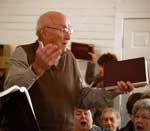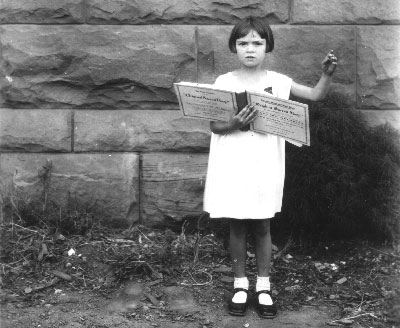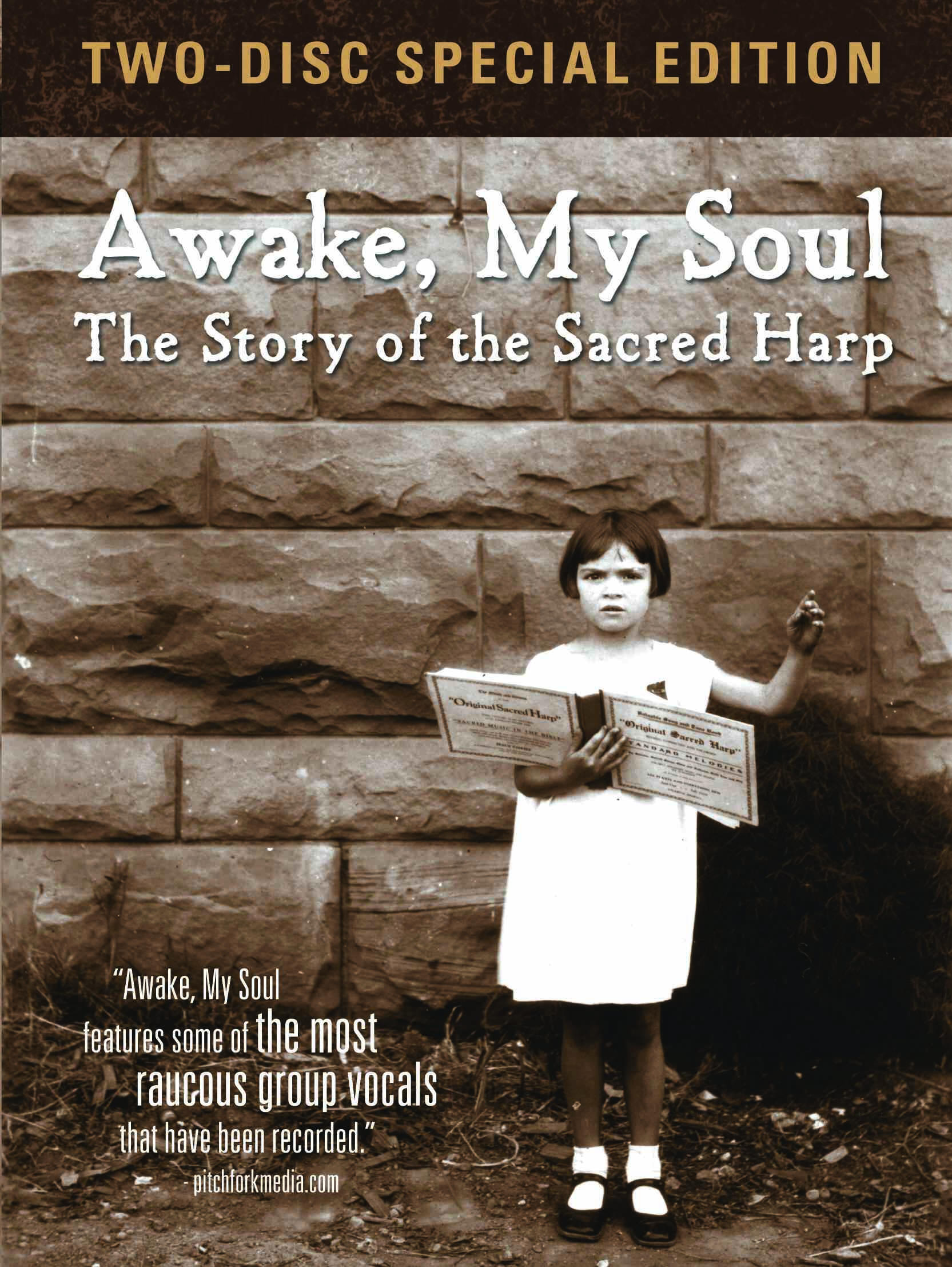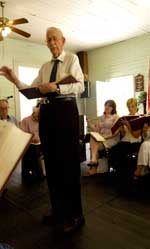About the Movie:
 "Awake,
My Soul" is a feature documentary that explores the history,
music, and traditions of Sacred Harp singing, the oldest
surviving American music. While often linked only to its
history, (e.g. the songs were used in the recent historical
films "Cold Mountain" and "Gangs of New York") this haunting
music has survived over 200 years tucked away from sight in
the rural deep south, where in old wooden country churches,
devoted singers break open The Sacred Harp, a shape note
hymnal first published in Georgia in 1844. These singers
have inherited The Sacred Harp and its traditions from those
who came before them and preserved these fierce yet
beautiful songs, many of which are much older than the
hymnal itself. And so they, like the early singers, begin
each song by intoning syllables which are represented by
each shaped note in their hymnal: fa, sol, la, and mi. To
the casual observer, it is some foreign, unintelligible
language, but to these Sacred Harp singers, it is the key
that unlocks mysteries: songs of both beauty and sorrow, of
life and of death, songs that cause feet to stomp and tears
to flow, often at the same time. They are ancient sounds,
which are at times disorienting to the modern ear, and yet
they are sung with such passion and force that it becomes
obvious that these songs are very much alive. Awake My Soul
is a film that captures both the history and the vitality of
a music that is utterly unlike any music most viewers are
likely to have heard.
"Awake,
My Soul" is a feature documentary that explores the history,
music, and traditions of Sacred Harp singing, the oldest
surviving American music. While often linked only to its
history, (e.g. the songs were used in the recent historical
films "Cold Mountain" and "Gangs of New York") this haunting
music has survived over 200 years tucked away from sight in
the rural deep south, where in old wooden country churches,
devoted singers break open The Sacred Harp, a shape note
hymnal first published in Georgia in 1844. These singers
have inherited The Sacred Harp and its traditions from those
who came before them and preserved these fierce yet
beautiful songs, many of which are much older than the
hymnal itself. And so they, like the early singers, begin
each song by intoning syllables which are represented by
each shaped note in their hymnal: fa, sol, la, and mi. To
the casual observer, it is some foreign, unintelligible
language, but to these Sacred Harp singers, it is the key
that unlocks mysteries: songs of both beauty and sorrow, of
life and of death, songs that cause feet to stomp and tears
to flow, often at the same time. They are ancient sounds,
which are at times disorienting to the modern ear, and yet
they are sung with such passion and force that it becomes
obvious that these songs are very much alive. Awake My Soul
is a film that captures both the history and the vitality of
a music that is utterly unlike any music most viewers are
likely to have heard.
Insofar as Sacred Harp is among the earliest music in America, its history is incredibly rich. The narrative that emerges in this history is full of inspiring stories and of conflict, mostly with the cultural elites. In this way, the Sacred Harp tradition can be seen as being, on one hand conservative, in that it has preserved these old songs, and on the other hand, subversive, in that it has consistently repelled any attempts to tame or change it by the cultural and musical elites.




 I
discovered Sacred Harp singing in 1991. At a concert in Atlanta, I
heard about an upcoming "shaped note" singing that was being held
about in North Georgia. As I approached the Primitive Baptist Church
where the singing was held, I could already hear voices. It was the
sound, not of a choir, but of people singing. People with flaws and
without perfect pitch, but meaning every word of it: "Serve with a
single heart and eye, and to Thy glory live or die." I immediately
felt transported. What can I call this experience? Overwhelmed.
There is a sense in which this moment informed the entire making of
""Awake, My Soul"". It became my desire for others to experience
this moment as well. Ever since, I have tried to convince my
friends that if they will only drive 45 minutes, their minds will be
blown. Yet, 45 minutes is a tall order evidently. I decided if they
will not come to a singing, I must bring the singing to them.
I
discovered Sacred Harp singing in 1991. At a concert in Atlanta, I
heard about an upcoming "shaped note" singing that was being held
about in North Georgia. As I approached the Primitive Baptist Church
where the singing was held, I could already hear voices. It was the
sound, not of a choir, but of people singing. People with flaws and
without perfect pitch, but meaning every word of it: "Serve with a
single heart and eye, and to Thy glory live or die." I immediately
felt transported. What can I call this experience? Overwhelmed.
There is a sense in which this moment informed the entire making of
""Awake, My Soul"". It became my desire for others to experience
this moment as well. Ever since, I have tried to convince my
friends that if they will only drive 45 minutes, their minds will be
blown. Yet, 45 minutes is a tall order evidently. I decided if they
will not come to a singing, I must bring the singing to them.